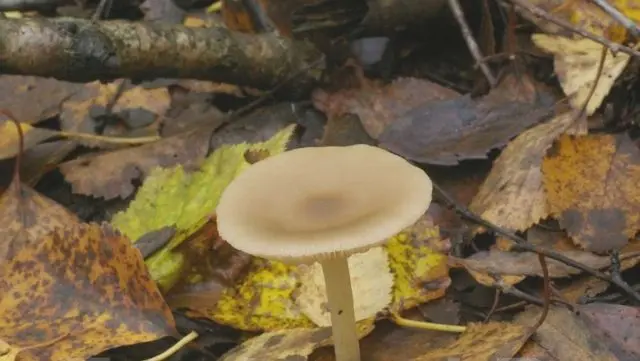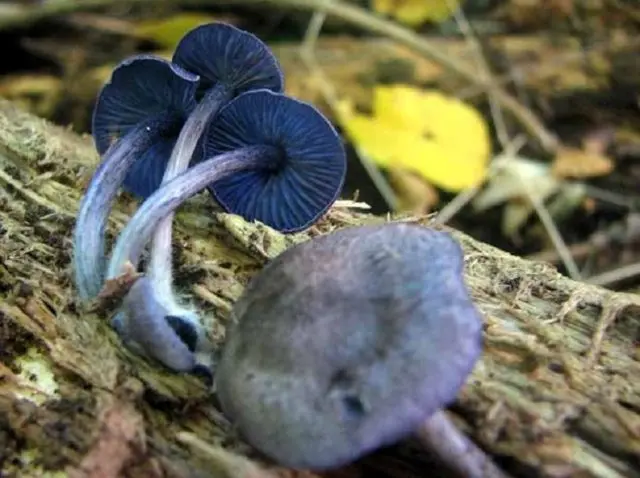Contents
Entoloma grayish (grayish leptonia) is a representative of the genus Entoloma subgenus Leptonia (Leptonia). The mushroom is quite peculiar, so lovers of “silent hunting” will be of great help to its description and photo.
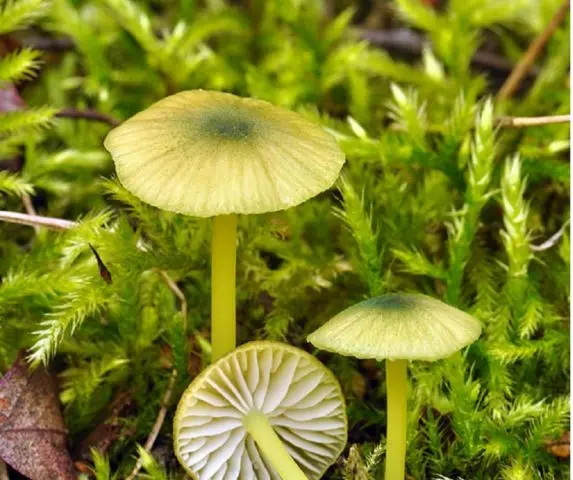
Description of gray-haired Leptonia
Scientific literature records two Latin names – Entoloma incanum and Leptonia euchlora. To search for data on the fungus, you can use any of them.
Cap Description
The cap changes shape as the fruiting body develops. At first it is convex, then it flattens out and becomes flat.

Then looks slightly depressed in the middle. The diameter of the cap is small – from 1 cm to 4 cm.

Sometimes the center is covered with scales. The color of the cap varies in olive tones from light to rich, golden or dark brown is found. The color of the center of the circle is darker.
The plates are not frequent, wide. Slightly arched. The pulp is distinguished by a mouse smell, which can be considered a characteristic sign of the fungus.
Description of the leg
This part of the fungus is slightly pubescent, has a cylindrical shape with a thickening towards the base.
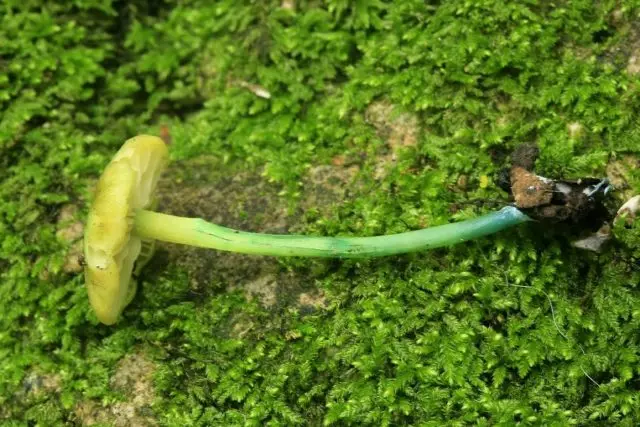
The height of the mature stem is 2-6 cm, diameter is 0,2-0,4 cm. Inside it is hollow, painted yellowish-green. The base of the entoloma stem is almost white, in mature mushrooms it acquires a blue tint. Leg without ring.
Is the mushroom edible or not?
Leptonia grayish is classified as a poisonous mushroom. When used in humans, there are signs of severe poisoning. The fungus is considered a life-threatening species.
Where and how common is Leptonia greyish
Belongs to rare varieties of the family. Prefers sandy soils, mixed or deciduous forests. Likes to grow on edges, roadsides or meadows. In Europe, America and Asia, the species is quite common. On the territory of the Leningrad region, it is listed in the list of mushrooms of the Red Book. It grows in small groups, as well as singly.
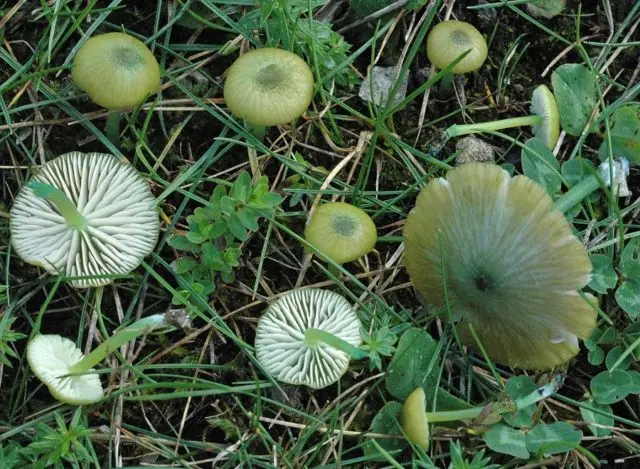
Fruiting occurs at the end of August and the first decade of September.
Twins and their differences
Leptonia greyish (Entoloma greyish) can be mistaken for some types of entoloma with a yellow-brown color. Among them there are edible and poisonous representatives:
- Entoloma depressed (squeezed) or Entoloma rhodopolium. In dry weather, the hat has a gray or olive brown color, which can be misleading. It bears fruit at the same time as the grayish entoloma – August, September. The main difference is the strong smell of ammonia. It is considered an inedible species, in some sources it is classified as poisonous.

- Entoloma brightly colored (Entoloma euchroum). Also an inedible species with a characteristic purple color of the cap and blue plates. Its shape changes with age from convex to concave. Fruiting lasts from late September to mid-October. The smell of the pulp is very unpleasant, the texture is fragile.

Conclusion
Entoloma grayish (grayish leptonia) is a rather rare species. Its poisonous properties pose a danger to human health. Knowing the signs and time of fruiting will prevent the possible entry of fruiting bodies into the mushroom picker’s basket.










